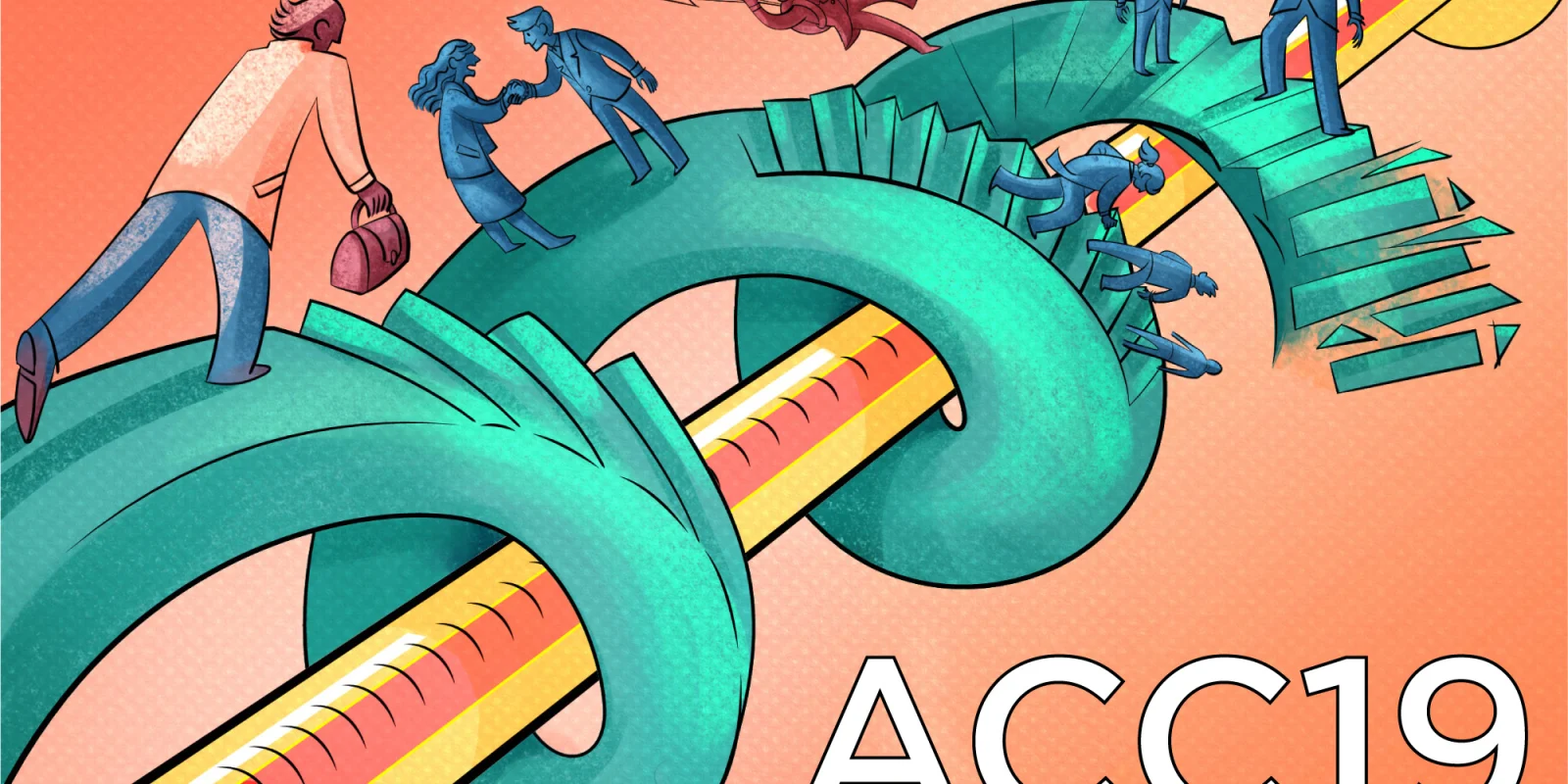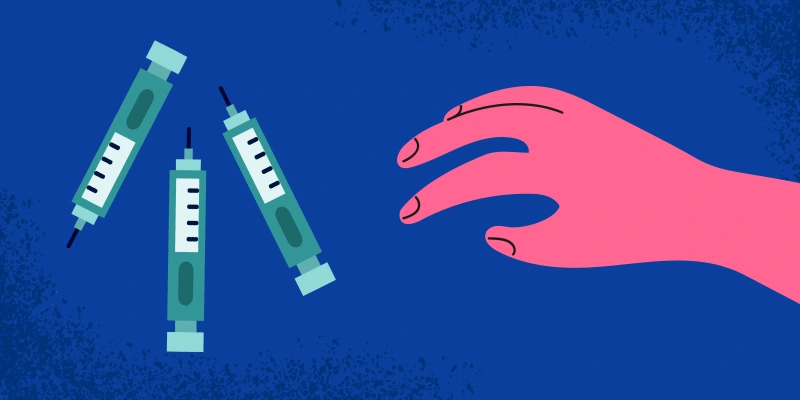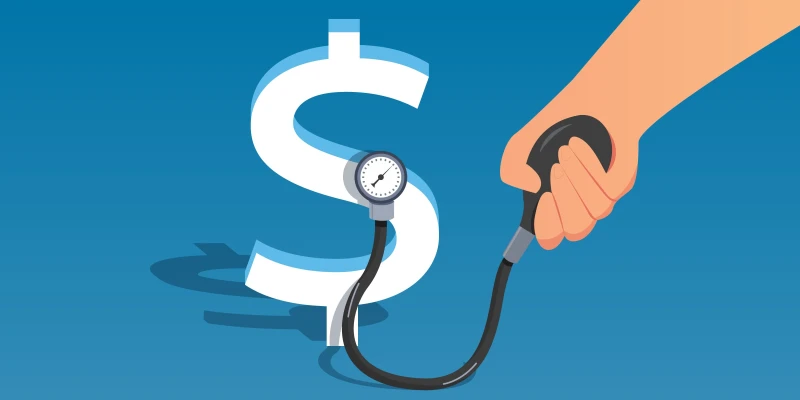
As I walked through the rainy streets of New Orleans, I checked my Apple Watch to see if I was making good time. My map told me I had only five minutes to get to the Convention Center. As a Cardiology fellow, I was thrilled to be going to the 68th Annual Scientific Sessions of the American College of Cardiology — my first of these meetings.
Dr. Mintu Turakhia, an associate professor of cardiovascular medicine at Stanford Medical School and co-principal investigator, takes the stage to announce the findings of the much talked-about Apple Heart Study. The goal of the study is to identify atrial fibrillation (Afib) using the Apple Watch.
Reviewing the technology that is already in its fourth generation, the Apple Watch uses photoplethysmography by means of an optical sensor using green light to detect the flow of red blood in the wrist (the watch worn in the study did not use the anticipated electrocardiogram feature). The changes in flow correlate with the arterial pulse which the watch translates to heart rate. Using periodic opportunistic measurements, a "tachogram” is built by compiling episodes of tachycardia throughout the day. If the sensed pulse is irregular, more frequent sampling is triggered. If five of six tachograms are irregular in 48 hours, the wearer receives a notification through the installed study app of an irregular heart rate.
The study included self-enrolled subjects who had an Apple Watch of any generation and a compatible iPhone. It was prospective, single arm, and included those 22 years-old and above. They excluded those with reported history of atrial fibrillation and those on anticoagulants.
Those who received a notification were asked to contact a study physician for a video telehealth visit via the app, and if a series of questions raised suspicion for arrhythmia, the participant was sent an ECG patch to wear for seven days along with a 90-day survey.
Primary endpoints were Afib lasting over 30 seconds on ECG patch in those over 65 years-old or simultaneous Afib on ECG patch and tachogram. The study was designed to have 500,000 enrolled (to get 503 patches in each 65 or older and less that 65) to have sufficient precision to estimate the 1) yield of Afib on ECG patch with 97.5 percent confidence interval (CI) less than 10 percent and 2) positive predictive value (PPV) (97.5 percent CI lower > 0.70 and upper ≥ 0.75) of a tachogram with simultaneous ECG patch, both in those over 65 and overall.
Of the total cohort of 419,297 individuals, 2,161 (0.5 percent) received a notification. Of those, 945 (or 44 percent) completed the study visit with 450 (or 21 percent) having an ECG patch worn and returned to the investigators.
Notification rates were highest in those over 65 (roughly 3.2 percent), whereas those less than 40 were rarely notified (0.16 percent), with a mean age of 57. Men were much more likely to be notified than women (0.70 vs 0.26 percent). They were also mostly white (81 percent), with a high rate of obesity (46 percent), hypertension (42 percent), and low rate of diabetes (12 percent).
In the analysis group of those who received a notification and ECG patch, Afib was identified in 34 percent and 35 percent of those over 65. For irregular tachograms, the PPV of the overall cohort was 0.71 and over 65 was 0.60, with the PPV of irregular pulse notification being slightly higher.
Taking the data a step further in the notification with ECG patch endpoint, there were 14 false positives, making the specificity 95 percent. There were 81 with a negative ECG patch, making the sensitivity 47 percent. However, only 25 of the 181 over 65 had Afib on the patch and a notification, with a PPV of 0.78.
The study had multiple limitations, which include high drop off rates after notification, low ECG patches worn and returned, reliance on self-reporting of enrollment criteria, and outcomes. While the secondary endpoints of simultaneous Afib on ECG patch with notification, or self-reported contact with health care provider were answered to a degree, the primary endpoint of detection in those over 65 was not. It was not clear if this was actually Afib and the yield was quite low. As such, the irregular tachogram may have detected Afib, but may have been missed on the patch. Additionally, the target enrollment of 500,000 participants, with 75,000 aged 65 or older, was not reached.
The US Preventive Service Task Force has published guidance on ECG screening for Afib, noting that pulse palpation is no better than ECG at identification. There is also no evidence that treatment with anticoagulation of screened, asymptomatic older adults results in improved outcomes than usual detection or symptom development and it is not likely cost-effective.
Future iterations of the study using the ECG feature on newer Apple Watches may provide some insight into this massive "screening program". Given less than 1 in 200,000 young people (<40) were identified to have Afib, this is a terrible screening tool. And if truly positive, it probably identified those with other cardiovascular morbidities. However, this may be somewhat revealing in those over 65, but the clinical implications for treatment are unclear.
This is arguably a pilot study given the pragmatic design and self-enrolling population. It is an intriguing study with a pioneering approach. Valentine Fuster, MD, MACC pointed out that adherence to the study was low, and questioned the cost effectiveness, particularly worldwide.
This is expensive technology for each individual to invest in. As such, the study cost $8 million to conduct, making a per-patient (of the 450 evaluated with an ECG patch) cost of over $17,000. This is obviously higher cost than seeing an individual in clinic, but if all Apple Watch wearers start coming to a cardiologist to get a 7-day monitor, the societal cost would be enormous.
Is this practice changing? I will disclose that I have had only one patient come to clinic with their Apple Watch, but he had known Afib and used it as a heart rate monitor for tachycardia burden (which is another topic for discussion). I don't think I will change my practice, however, I would prefer that young, asymptomatic, low-risk patients wearing an expensive device first discuss their concerns with their Primary Care provider. We will probably start to see a higher prevalence in Afib with lower stroke rates over time, simply because we are identifying low-risk individuals early. On the other han, if my 65 year-old veteran comes to clinic with dyspnea and has numerous "notifications" from their Apple Watch, they have my attention.
Around me at end of the session, people applauded as they stood up, looked at the bright screens of their Apple Watches and iPhones. As I briskly walked to the next session, my watch informed me that I had already reached my exercise goal for the day.
Dustin Hillerson, MD is a cardiologist based in Lexington, KY.
Illustration by April Brust







